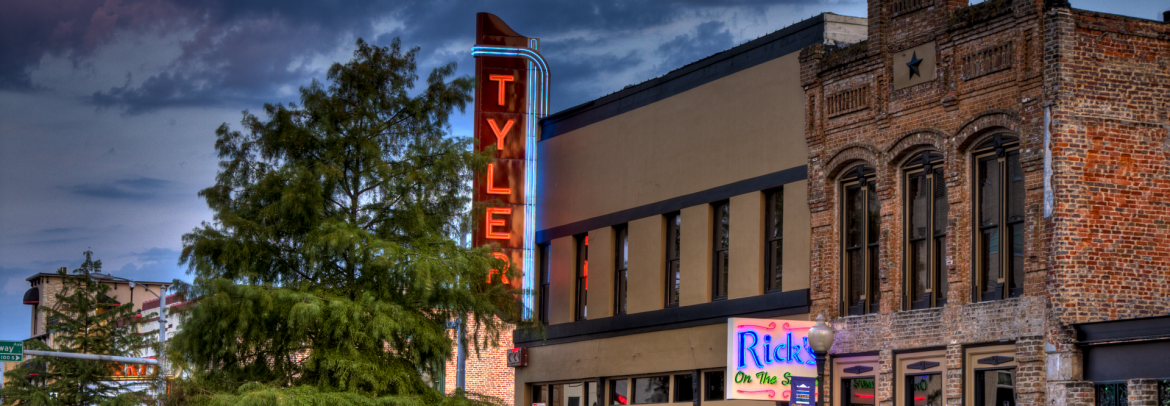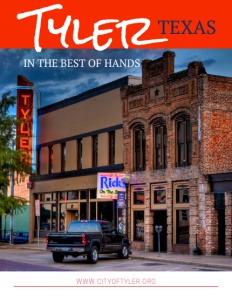Tyler, Texas
In the best of hands
Business View Magazine interviews Mayor Martin Heines and City Manager Ed Broussard, of Tyler, Texas, for our focus on Infrastructure in American Cities.
Welcome to the City of Tyler, an economic hub in northeast Texas and the Rose Capital of America! Recognized as a prosperous and growing city, Tyler offers big city amenities while maintaining a pleasant and friendly small-town charm. In 1846, this centrally-located area on a hilltop in Smith County, Texas was selected as the county seat and named Tyler, for President John Tyler, in recognition of his support for admitting Texas to the United States. Today, the City of Tyler is considered the manufacturing, healthcare, educational, and retail center of east Texas – and appreciated as a natural beauty by visitors and residents, alike.
Business View Magazine recently discussed the many facets of economic development happening in the City of Tyler, with Mayor Martin Heines; City Manager, Ed Broussard; Director of Marketing and Communications, Julie Goodgame; and Dr. Mike Tidwell, President of the University of Texas at Tyler. What we discovered is that Tyler is in good hands. The following is an edited transcript of that conversation.
BVM: Can you give us an overview of Tyler from an economic aspect?
Mayor Heines: “We run a very conservative, business-like city government with zero general obligation debt. Our tax rate is low at 24.45 cents per 100 dollars; at least half below any other hub city in Texas. If you look outside all the big urban areas and their suburbs, we have a very large sales tax inflow into our city budget. We have an extreme amount of economic activity going on as the hub of northeast Texas.”
Broussard: “One of the things Tyler has done really well has been working collectively with the community on economic development. We belong to the Tyler Economic Development Council, which consists of 122 organizations, primarily businesses, along with Smith County and the City of Tyler, that work together for economic development purposes. TEDC was formed in 1989 to help diversify the Tyler/Smith County economy by retaining and attracting primary jobs and investment to the area.”
BVM: What are the major economic drivers?
Mayor Heines: “Our history is very interesting. We were a rural agriculture area, until the 1920s when the east Texas oil field was founded near here in Kilgore. All the professional services you find in that city for the oil and gas industry came out of Tyler. Our population almost doubled during those years. People from all over the world moved here to be part of that industry. With that, came a wide variety of religious and ethnic backgrounds but, most importantly, the people that came to take part in that industry were entrepreneurial. They were risk takers. So, during the ‘80s when the price of oil hit $7 at one point, all the leaders in this community said, ‘We need to pivot; to look at how we do economic development for the future.’ So much has grown from that.
“Tyler has still retained this entrepreneurial, risk-taking spirit. But now, the healthcare industry is huge. We have 25,000 jobs in the medical sector; not only are the major regional hospital systems located in Tyler, but all the huge infrastructure around that. And we have 22,000 college students. The university sector has grown tremendously. So, while we have a city of 115,000, we actually have 250,000 people in here, every day. Our whole region trade area is about 650,000 people. For all the professional services we provide – healthcare, education, retail – people are drawn into our community. So, we are also building our infrastructure for all those other visitors.”
Broussard: “It’s interesting watching the rapid growth of the medical and education pieces – how it benefits our community, and all the spinoff functions that have come from there. We’re seeing a lot of growth in the technology and innovation fields, even where the University of Texas at Tyler (UT Tyler) is designing courses that correspond to entrepreneurship. We’ve gone from a local college community to having 22,000 full-time students at four different institutions that make up our higher education here in Tyler. Because of that, we are having to understand that we are a college town and need to have options and opportunities for these students that we haven’t had in the past.”

BVM: Are public/private partnerships part of the economic plan?
Dr. Tidwell: “Here at UT Tyler, we believe that for a region to grow and thrive, education has to be at its core. Community colleges play such a large role in the fabric of the higher education life throughout the State of Texas and we’re really blessed to have a number of great community colleges here in the Tyler metro area. We take students from any of those institutions that want to go on for a four-year degree. In many cases, the programs they choose have included business, whether it’s a major or a minor. Our entrepreneurship program here is thriving and includes partnerships with local businesses, including valuable relationships with John Soules Foods, Trinity Mother Frances, UT Health East Texas, and Trane Corporation. We treat every organization that recruits here as a partner, because we want to make sure when we talk about student success, it’s not just in the classroom, it’s also career success.
“Accommodating all the students is a challenge. Last year, the university purchased an apartment complex with 324 beds because as enrollment has climbed, we have had a need for more housing on campus. As we move forward, we’ll be looking at public/private partnerships for a new housing project – a complex from 500 to 700 beds in Phase One, and a couple more phases over the next five years.”
Broussard: “One interesting joint project is Tyler’s Innovation Pipeline. It was our first maker space. The city joined with the university to raise funding to launch the project. There is a co-management arrangement in place and soon UT Tyler will take over, working it into their education structure. That shows that economic development is not done by just one group; it’s developed and continued by multiple groups. We look at how economic development can begin at home with brand new and expanding businesses.”
Goodgame: “We were able to revitalize a structure in our downtown core as part of that project. When you have that kind of a public/private partnership come together, and then you look at your existing assets to see where you could strategically locate these to also serve the greater economic good, that’s when really wonderful things can happen. And we were able to do that with this project.”

BVM: What else is going on with downtown rejuvenation?
Broussard: “The real success stories have been local families who are purchasing properties downtown and redeveloping them. One is the People’s Petroleum building; an art deco style of the 1930s that was totally restored by a family who have been in the Tyler community for many decades. They’ve also recently purchased the adjacent building, the Plaza Tower, and are working on the same type of revitalization. It’s wonderful to see people who have been in Tyler their whole lives becoming part of this renaissance.
“Throughout the downtown there are mixed-use properties coming in – everything from small breweries with restaurants adjacent, to loft apartment projects. The Plaza Tower will have retail areas on the main level and office space for rent upstairs. The City of Tyler renovated Liberty Hall, an old movie theater, using a lot of private donations, and now that venue has sold out music and movie events, bringing a nighttime crowd to be part of our downtown experience.”
BVM: How is the City of Tyler investing for its future?
Mayor Heines: “Tyler is now decreasing in age as a population. We’re going younger because of the colleges. What is transpiring is millennial entrepreneurship in the downtown and midtown areas with business ownership and enhanced retail activity. We built a public parking garage downtown. That was a significant infrastructure investment we made with cash into the downtown area. We always try to do certain levels of public investment to encourage the private sector to move forward with their own investments.
“We have a $150 million budget. Of that, this year, we are spending $50 million on infrastructure purchases and development. We always take care of the priorities: upgrading water and sewer lines, drainage, new roads, revamping the water treatment plant. Our airport runway has finally been extended to accommodate the 737s, and we have a brand new partner with that, Frontier Airlines, coming to Tyler.”
Forward thinking and significant investment in infrastructure is making Tyler a strong, vital, attractive community for enjoying life from every perspective. The city’s future is definitely in the best of hands.
AT A GLANCE
Who: Tyler, Texas
What: Rose Capital of America; population 115,000
Where: Smith County, northeast Texas
Website: www.cityoftyler.org
PREFERRED VENDORS
Reynolds & Kay, Ltd. – (903) 592-0835


